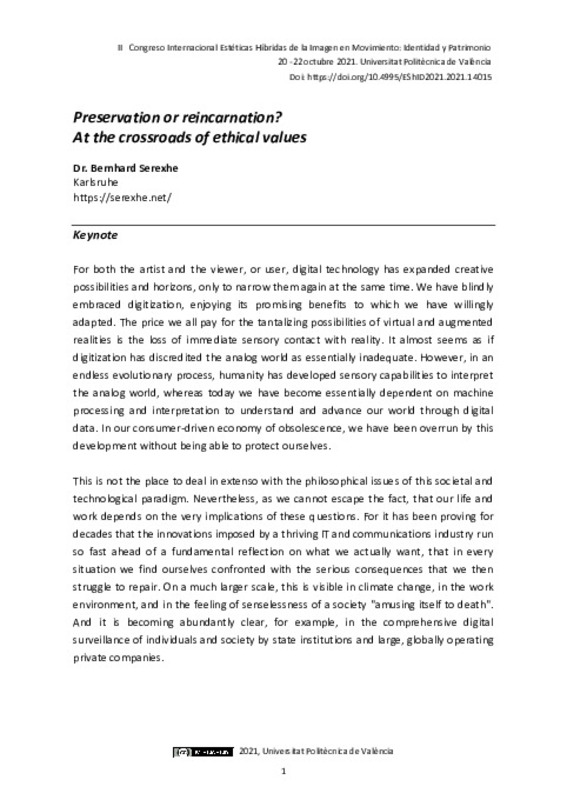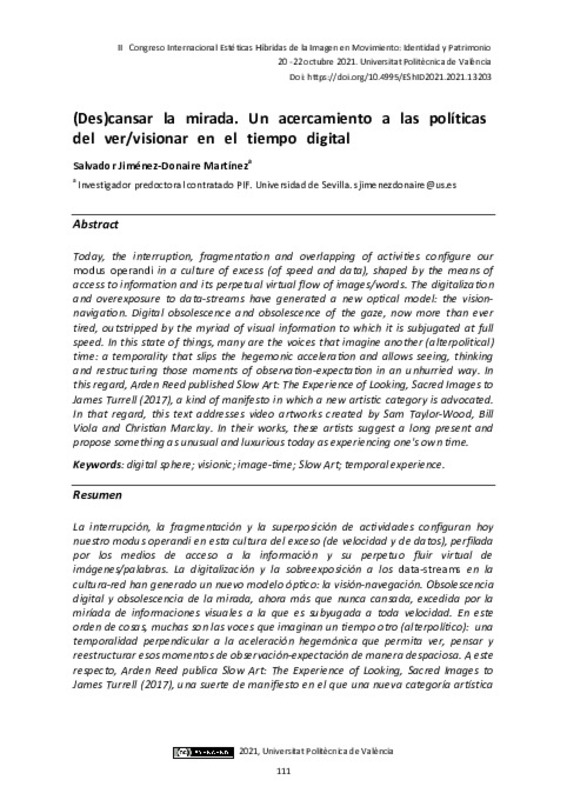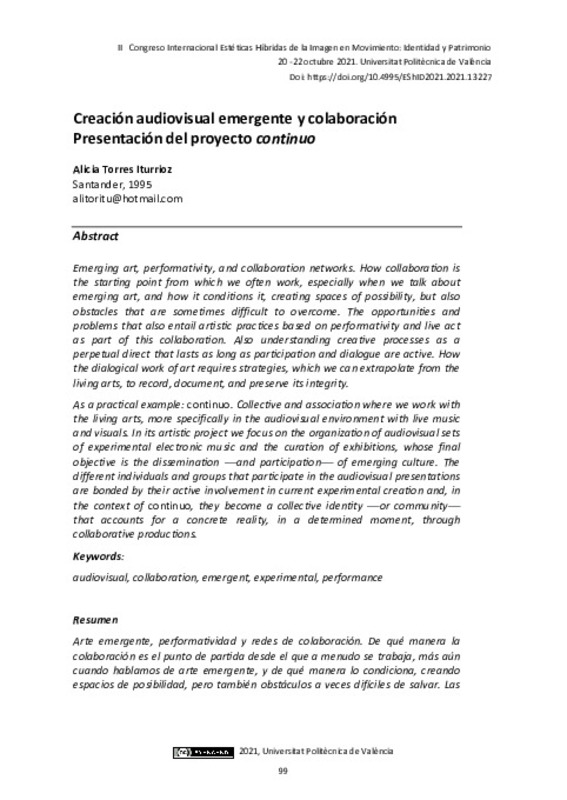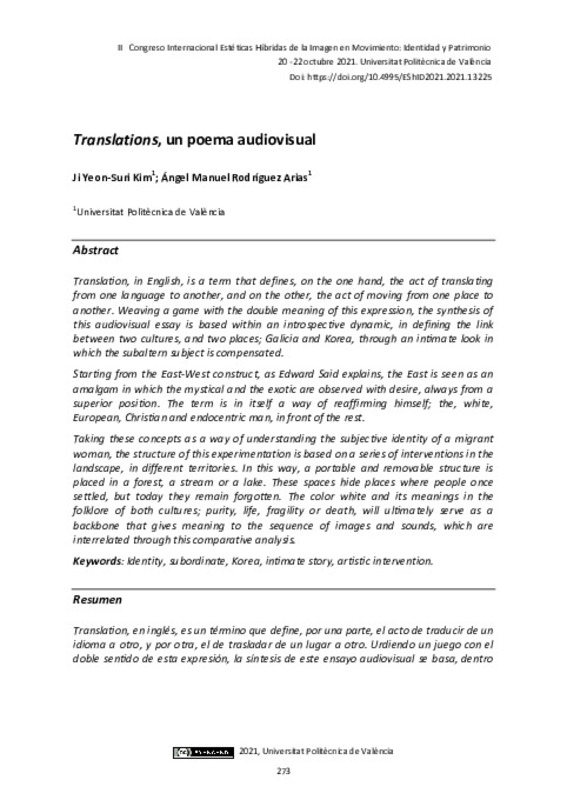- RiuNet repositorio UPV
- :
- Investigación
- :
- Material investigación. Editorial UPV
- :
- Congresos. Editorial UPV
- :
- EShID2021 - II Congreso Internacional Estéticas Híbridas de la Imagen en Movimiento: Identidad y Patrimonio
Refinar
EShID2021 - II Congreso Internacional Estéticas Híbridas de la Imagen en Movimiento: Identidad y Patrimonio
El II Congreso Internacional Estéticas Híbridas de la Imagen en Movimiento: Identidad y Patrimonio es un espacio de encuentro para las diferentes disciplinas implicadas en el estudio de los nuevos medios, los estudios visuales, la estética, la identidad y la teoría crítica, así como las estrategias de preservación del medio audiovisual.
Se trata de una iniciativa del Proyecto MICIU de I+D+i EShID: Estéticas híbridas de la imagen en movimiento. Videoarte español y dinámicas identitarias en el mapa global (2019-2021), centrado en las labores de investigación, transferencia y difusión de las obras audiovisuales realizadas en nuestro país del archivo ARES. Estéticas, identidades y prácticas audiovisuales en España; así como del grupo de investigación Visu@ls. Cultura visual y políticas de identidad. Tras la primera edición, celebrada en noviembre de 2020 en la Facultad de Filosofía de la Universidad de Salamanca y centrada en la temática de las migraciones, la globalización y la interculturalidad, en 2021 toma el relevo la Universitat Politècnica de València.









